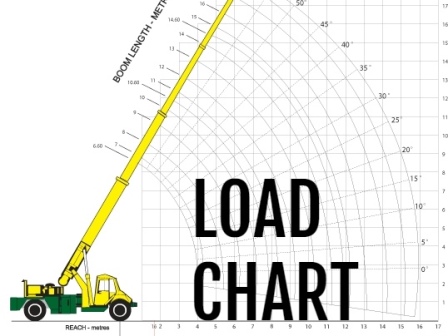Traditionally, when considering taking on an assignment, the operations planning team uses load charts and manual calculations to determine if the operation can be executed.
It is not easy to take into account all the joints of the crane, the reach and the lift height, while checking that the capacity of the crane is not exceeded.
Also, for crane lifts, the object and weight of the rope have a large impact on the lifting capacity of the crane and must be calculated manually.
Crane lifting capacity calculation
The application of a load table allows planning crane operations. Provides a visualization of the crane’s position and center of gravity, taking into account the crane mode, load, and length of extended cable. The analyzes are delivered with the relevant attributes and predefined load calculation parameters.
There are applications that can be installed on any PC. Parameters can then be entered for any operation, and you will get the corresponding load curves and crane view to enter your lifting procedures. Results can be printed out to be used on the job site.
Crane ground Bearing pressure calculator
Crane Stability and Ground Pressure
Many factors need to be considered when safely setting up mobile cranes on site. Crane stability often depends on the integrity of the ground on which it stands.
Effective assessment of ground conditions is essential to assist with the safe setup and operation of cranes. To reduce the risk of crane accidents as a result of improper crane set-up, planning activities shall be carried out by a competent person(s) to assess the capability of the ground to withstand the loads and pressures imposed by the lifting equipment.
All parties who are involved in the planning, set up and use of cranes on site must be aware of the fundamental criteria, planning issues, and risk assessments that are needed to ensure lifting operations proceed in a safe and stable manner.
Crane stability calculations
This Guidance Note provides general guidance to assist on:
- determining the load exerted by mobile crane outriggers or crawler crane tracks
- determining the suitability of the crane mats, and
- bearing capacity of different types of soil.
As with all activities on construction sites, the effective management of the safety of lifting operations can only succeed if all parties involved are clear about their roles and responsibilities. It is essential for all persons undertaking these roles to be competent, having relevant up-to-date training and the qualifications and experience appropriate to the operations for which they are responsible.
How to calculate crane load capacity?
The responsibilities for undertaking the various activities involved in the ground assessment are set out below:
- A person conducting a business or undertaking that includes the carrying out of construction work (i.e. the principle contractor in control of the project site) has overall responsibility for the safety of all personnel on-site.
They should ensure that where a crane is being used to carry out a task, adequate steps have been taken to ensure the stability of the crane during transport onto the site, set up, use, movement, maintenance, dismantling, and removal from the site.
The engineers should provide an accurate geotechnical report for the site ground condition or other relevant information for crane stability to the worker responsible for the lifting operations if this is necessary for the safe operation of the lifting activity.
It is generally the responsibility of the crane operator to ensure that the terrain is safe to work with.
- A worker who carries out work, i.e. the person or company in control of a lifting operation, is responsible for all aspects of planning, supervision, and execution of the lifting operation, including ensuring that the ground or structure on which equipment stands will take the loads imposed by the plant.
This does not mean that the worker has to be an expert in ground assessment, they must however take reasonable steps to satisfy themselves that the information provided by the person in control of the site is relevant and appropriate.
The worker should have the necessary confidence and authority to carry out their duties effectively and safely.
Where doubt exists as to the accuracy or sufficiency of the information provided it is the responsibility of the worker to ensure that

Mobile Crane Load Chart
Simply put, the only way to know if the load you are lifting with a mobile crane is within the limitations of the crane is to relate the lift to the manufacturer’s load chart and notes.
